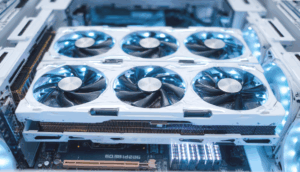CC-Link IE (Industrial Ethernet) represents a significant advancement in industrial network technology, offering unparalleled speed and deterministic communication for demanding automation applications. Unlike traditional Ethernet, CC-Link IE leverages a token-passing protocol to ensure reliable data delivery, making it ideal for real-time control systems, motion control, and high-speed data acquisition. The robustness of CC-Link IE cables is crucial for maintaining network integrity in harsh industrial environments. They are designed to withstand extreme temperatures, vibration, electromagnetic interference (EMI), and chemical exposure. Selecting the right CC-Link IE cable requires careful consideration of factors such as cable type (e.g., twisted pair, fiber optic), shielding requirements, and connector types.
Optimizing CC-Link IE network performance involves several key strategies. First, proper cable installation is paramount. This includes ensuring correct cable lengths, avoiding sharp bends, and using appropriate grounding techniques. Secondly, network segmentation can help to isolate critical components and minimize the impact of network congestion. By dividing the network into smaller subnets, you can reduce the number of devices competing for bandwidth and improve overall performance. Furthermore, regular network monitoring and diagnostics are essential for identifying and resolving potential issues before they lead to downtime. Tools such as network analyzers and diagnostic software can provide valuable insights into network traffic patterns, cable integrity, and device performance.
The choice between copper and fiber optic CC-Link IE cables depends largely on the application requirements and the environmental conditions. Copper cables are generally more cost-effective for shorter distances and less demanding environments. However, fiber optic cables offer superior bandwidth, immunity to EMI, and the ability to transmit data over much longer distances. In environments with high levels of electrical noise or where galvanic isolation is required, fiber optic cables are the preferred choice. When selecting copper cables, it’s important to choose cables that meet the stringent specifications of CC-Link IE, including Category 5e or Category 6a standards. Shielding is also critical to minimize the impact of EMI.
Beyond cable selection and installation, network configuration plays a vital role in optimizing CC-Link IE performance. Proper configuration of network devices, such as switches and routers, is essential for ensuring efficient data flow. This includes configuring quality of service (QoS) settings to prioritize critical traffic and implementing VLANs to segment the network. Furthermore, it’s important to optimize the communication parameters of individual devices on the network, such as the transmission rate and the data packet size. By carefully tuning these parameters, you can minimize latency and maximize throughput.
Finally, ongoing maintenance and troubleshooting are crucial for maintaining optimal CC-Link IE network performance. Regular inspections of cables and connectors can help to identify and address potential issues before they lead to network failures. Additionally, it’s important to keep network devices up to date with the latest firmware and software patches. By proactively addressing potential problems and implementing preventative maintenance measures, you can ensure that your CC-Link IE network continues to operate at peak performance for years to come. Thorough documentation of network configuration and troubleshooting procedures is also invaluable for facilitating quick and effective problem resolution.
